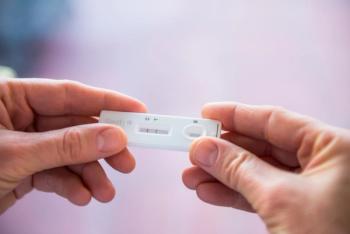
Examining the efficacy of using telehealth to offer prenatal care, achieve good perinatal outcomes
This past year in particular, telehealth showed how effective it could be in delivering quality health care. An investigation looks at how it can be used to help expectant mothers and newborns have positive perinatal outcomes.
Telehealth is nothing new in medical care and for the past several years has been considered a conduit for providing access to care when an office visit may not be possible. However, before the pandemic, telehealth wasn’t as widely used as it now and questions lingered about whether it could be used for all types of care. An
The investigators ran a cohort study to compare the perinatal outcomes of women who delivered between May 2019 and October 2019 and received typical in-person prenatal care with women who delivered between May 2020 and October 2020 and had audio-only virtual visits, all at a Dallas, Texas health system. All deliveries of an infant weighing more than 500 g, regardless of whether the child was live or stillborn, were included in the study.
A total of 6559 women delivered in the 2019 period and 6048 women delivered in the 2020 period. In the 2020 subcohort, 4067 of the expectant mothers attended at least 1 audio-only virtual prenatal visit and 1216 has at least 3 audio-only virtual prenatal visits. The 2020 subcohort of women went to a greater mean number of prenatal visits than those who gave birth in 2019 (9.8 [3.4] vs 9.4 [3.8] visits; P < .001). One hundred seventy-three women had a composite outcome, which included placental abruption, stillbirth, neonatal intensive care unit admission in a full-term (≥37 weeks) infant, or umbilical cord blood pH less than 7.0, which did not differ significantly from the 195 women who experience a composite outcome in 2019. Moreover, the rate of a composite outcome was not substantially different when looked at according to the number of audio-only visits attended.
Investigators concluded that using audio-only virtual prenatal visits was not linked to negative changes in perinatal outcomes but they did increase the number of prenatal visits completed in a vulnerable population due to improved access to care. The results offer further proof that some form of telehealth can help improve outcomes for women and newborns.
References
1. Duryea E, Adhikari E, Ambia A, Spong C, McIntire D, Nelson D. Comparison between in-person and audio-only virtual prenatal visits and perinatal outcomes. JAMA Netw Open. 2021;4(4):e215854. doi:10.1001/jamanetworkopen.2021.5854
Newsletter
Access practical, evidence-based guidance to support better care for our youngest patients. Join our email list for the latest clinical updates.











